Optimized Longitudinal and Lateral Control Strategy of Intelligent Vehicles Based on Adaptive Sliding Mode Control
Abstract
1. Introduction
- (1)
- Under the 3-DOF vehicle dynamics model, a fuzzy adaptive unscented Kalman filter observer is designed to estimate the VS, YR, SA, and RAC.
- (2)
- To address instability and external disturbance issues in vehicle tracking control, an ASMC under RBF neural networks is designed to calculate the total longitudinal force, the total lateral force, and the total yaw moment required by the vehicle.
- (3)
- The optimal tire driving force is obtained using a DSQP algorithm, significantly enhancing the path-tracking performance.
- (4)
- The state estimation algorithm and the path-tracking algorithm are validated using Carsim and Matlab/Simulink under different RACs and VSs, improving the vehicle’s tracking accuracy, stability, and robustness.
2. Vehicle Dynamics Modeling
2.1. Vehicle Dynamics Model
2.2. Tire Model and Inverse Model under Dugoff Model
3. State Observers under the KF Algorithm
3.1. Vehicle State Estimation
3.1.1. Establishment of Vehicle State Estimation System
3.1.2. Adaptive Adjustment Strategy Based on Fuzzy Control
3.1.3. Simulation Analysis of Vehicle State Estimation
- (1)
- Scenario 1: 60 km/h Double Lane Change (DLC)
- (2)
- Scenario 2: 100 km/h DLC
3.2. Road Adhesion Coefficient Estimation under UKF
3.2.1. Establishment of RAC Estimation System
3.2.2. Simulation Analysis of RAC Estimation
- (1)
- Scenario 1: Open Road
- (2)
- Scenario 2: Joint Road
4. Path-Tracking Control Strategy Based on LLCC
4.1. Overall Path-Tracking Control Strategy Design
4.2. Design and Optimization of Path-Tracking Controller under RBF Neural Networks
4.3. Tire Force Distribution under the Longitudinal and Lateral Coordinated Control
4.3.1. Selection of Optimization Objectives
4.3.2. Establishment of Constraints
4.3.3. Optimal Tire Force Calculation Based on Distributed Sequential Quadratic Programming Algorithm
5. Simulation Analysis of Path-Tracking Control System
5.1. Simulation Analysis of Controller Optimization Strategy
5.2. Simulation Analysis of LLCC Strategy
5.2.1. DLC on Low RAC
5.2.2. Lane Change on High RAC
5.2.3. Lane Change on Low RAC
6. Conclusions
Author Contributions
Funding
Data Availability Statement
Conflicts of Interest
References
- Miao, H.; Diao, P.; Xu, G.; Yao, W.; Song, Z.; Wang, W. Research on decoupling control for the longitudinal and lateral dynamics of a tractor considering steering delay. Sci. Rep. 2022, 12, 13997. [Google Scholar] [CrossRef] [PubMed]
- Li, Y.; Hao, G. Energy-optimal adaptive control based on model predictive control. Sensors 2023, 23, 4568. [Google Scholar] [CrossRef] [PubMed]
- Feng, X.; Liu, S.; Yuan, Q.; Xiao, J.; Zhao, D. Research on wheel-legged robot based on LQR and ADRC. Sci. Rep. 2023, 13, 15122. [Google Scholar] [CrossRef] [PubMed]
- Wu, L.; Zhou, R.; Bao, J.; Yang, G.; Sun, F.; Xu, F.; Jin, J.; Zhang, Q.; Jiang, W.; Zhang, X. Vehicle stability analysis under extreme operating conditions based on LQR control. Sensors 2022, 22, 9791. [Google Scholar] [CrossRef]
- Ji, X.; Ding, S.; Wei, X.; Mei, K.; Cui, B.; Sun, J. Path Tracking Control of Unmanned Agricultural Tractors via Modified Supertwisting Sliding Mode and Disturbance Observer. IEEE/ASME Trans. Mechatron. 2024. [Google Scholar] [CrossRef]
- Oh, K.; Seo, J. Development of a sliding-mode-control-based path-tracking algorithm with model-free adaptive feedback action for autonomous vehicles. Sensors 2022, 23, 405. [Google Scholar] [CrossRef] [PubMed]
- Rickenbach, R.; Köhler, J.; Scampicchio, A.; Zeilinger, M.N.; Carron, A. Active learning-based model predictive coverage control. IEEE Trans. Autom. Control 2024. [Google Scholar] [CrossRef]
- Xu, S.; Peng, H. Design, analysis, and experiments of preview path tracking control for autonomous vehicles. IEEE Trans. Intell. Transp. Syst. 2019, 21, 48–58. [Google Scholar] [CrossRef]
- Ma, Y.; Duan, P.; Sun, Y.; Chen, H. Equalization of lithium-ion battery pack based on fuzzy logic control in electric vehicle. IEEE Trans. Ind. Electron. 2018, 65, 6762–6771. [Google Scholar] [CrossRef]
- Yao, M.; Deng, H.; Feng, X.; Li, P.; Li, Y.; Liu, H. Improved dynamic windows approach based on energy consumption management and fuzzy logic control for local path planning of mobile robots. Comput. Ind. Eng. 2024, 187, 109767. [Google Scholar] [CrossRef]
- He, Y.; Liu, Y.; Yang, L.; Qu, X. Deep adaptive control: Deep reinforcement learning-based adaptive vehicle trajectory control algorithms for different risk levels. IEEE Trans. Intell. Veh. 2023, 9, 1654–1666. [Google Scholar] [CrossRef]
- Jiang, Y.; Meng, H.; Chen, G.; Yang, C.; Xu, X.; Zhang, L.; Xu, H. Differential-steering based path tracking control and energy-saving torque distribution strategy of 6WID unmanned ground vehicle. Energy 2022, 254, 124209. [Google Scholar] [CrossRef]
- Kim, H.; Wan, W.; Hovakimyan, N.; Sha, L.; Voulgaris, P. Robust vehicle lane keeping control with networked proactive adaptation. Artif. Intell. 2023, 325, 104020. [Google Scholar] [CrossRef]
- Li, H.; Huang, J.; Yang, Z.; Hu, Z.; Yang, D.; Zhong, Z. Adaptive robust path tracking control for autonomous vehicles with measurement noise. Int. J. Robust Nonlinear Control 2022, 32, 7319–7335. [Google Scholar] [CrossRef]
- Yang, C.; Liu, J. Trajectory tracking control of intelligent driving vehicles based on MPC and Fuzzy PID. Math. Probl. Eng. 2023, 2023, 2464254. [Google Scholar] [CrossRef]
- Li, G.; Shang, P.; Zheng, C.; Sun, D. A Lateral Control Method of Intelligent Vehicles Based on Shared Control. Symmetry 2022, 14, 2447. [Google Scholar] [CrossRef]
- Chu, X.; Liu, Z.; Mao, L.; Jin, X.; Peng, Z.; Wen, G. Robust event triggered control for lateral dynamics of intelligent vehicle with designable inter-event times. IEEE Trans. Circuits Syst. II Express Briefs 2022, 69, 4349–4353. [Google Scholar] [CrossRef]
- El Hajjami, L.; Mellouli, E.M.; Žuraulis, V.; Berrada, M.; Boumhidi, I. A robust intelligent controller for autonomous ground vehicle longitudinal dynamics. Appl. Sci. 2022, 13, 501. [Google Scholar] [CrossRef]
- Yang, D.; Liu, T.; Song, D.; Zhang, X.; Zeng, X. A real time multi-objective optimization Guided-MPC strategy for power-split hybrid electric bus based on velocity prediction. Energy 2023, 276, 127583. [Google Scholar] [CrossRef]
- Zhou, Y.; Pan, M.; Guan, W.; Cao, X.; Chen, H.; Yuan, L. A Novel Longitudinal Control Method Integrating Driving Style and Slope Prediction for High-Efficiency HD Vehicles. Appl. Sci. 2023, 13, 11968. [Google Scholar] [CrossRef]
- Zhang, S.; Liu, X.; Deng, G.; Ou, J.; Yang, E.; Yang, S.; Li, T. Longitudinal and lateral control strategies for automatic lane change to avoid collision in vehicle high-speed driving. Sensors 2023, 23, 5301. [Google Scholar] [CrossRef] [PubMed]
- Lai, F.; Yang, H. Integrated Longitudinal and Lateral Control of Emergency Collision Avoidance for Intelligent Vehicles under Curved Road Conditions. Appl. Sci. 2023, 13, 11352. [Google Scholar] [CrossRef]
- Qin, P.; Tan, H.; Li, H.; Wen, X. Deep Reinforcement Learning Car-Following Model Considering Longitudinal and Lateral Control. Sustainability 2022, 14, 16705. [Google Scholar] [CrossRef]
- Wang, Z.; Qu, X.; Cai, Q.; Chu, F.; Wang, J.; Shi, D. Efficiency Analysis of Electric Vehicles with AMT and Dual-Motor Systems. World Electr. Veh. J. 2024, 15, 182. [Google Scholar] [CrossRef]
- Cai, Q.; Qu, X.; Wang, Y.; Shi, D.; Chu, F.; Wang, J. Research on Optimization of Intelligent Driving Vehicle Path Tracking Control Strategy Based on Backpropagation Neural Network. World Electr. Veh. J. 2024, 15, 185. [Google Scholar] [CrossRef]
- Wang, B.; Lei, Y.; Fu, Y.; Geng, X. Autonomous vehicle trajectory tracking lateral control based on the terminal sliding mode control with radial basis function neural network and fuzzy logic algorithm. Mech. Sci. 2022, 13, 713–724. [Google Scholar] [CrossRef]
- Wang, Y.; Shao, Q.; Zhou, J.; Zheng, H.; Chen, H. Longitudinal and lateral control of autonomous vehicles in multi-vehicle driving environments. IET Intell. Transp. Syst. 2020, 14, 924–935. [Google Scholar] [CrossRef]
- Feng, Z.; Jiang, H.; Wei, Q.; Hing, Y.; Ojo, A.O. Model-free adaptive sliding mode control for intelligent vehicle longitudinal dynamics. Adv. Mech. Eng. 2022, 14, 16878132221110131. [Google Scholar]
- Guo, J.; Wang, J.; Luo, Y.; Li, K. Robust lateral control of autonomous four-wheel independent drive electric vehicles considering the roll effects and actuator faults. Mech. Syst. Signal Process. 2020, 143, 106773. [Google Scholar] [CrossRef]
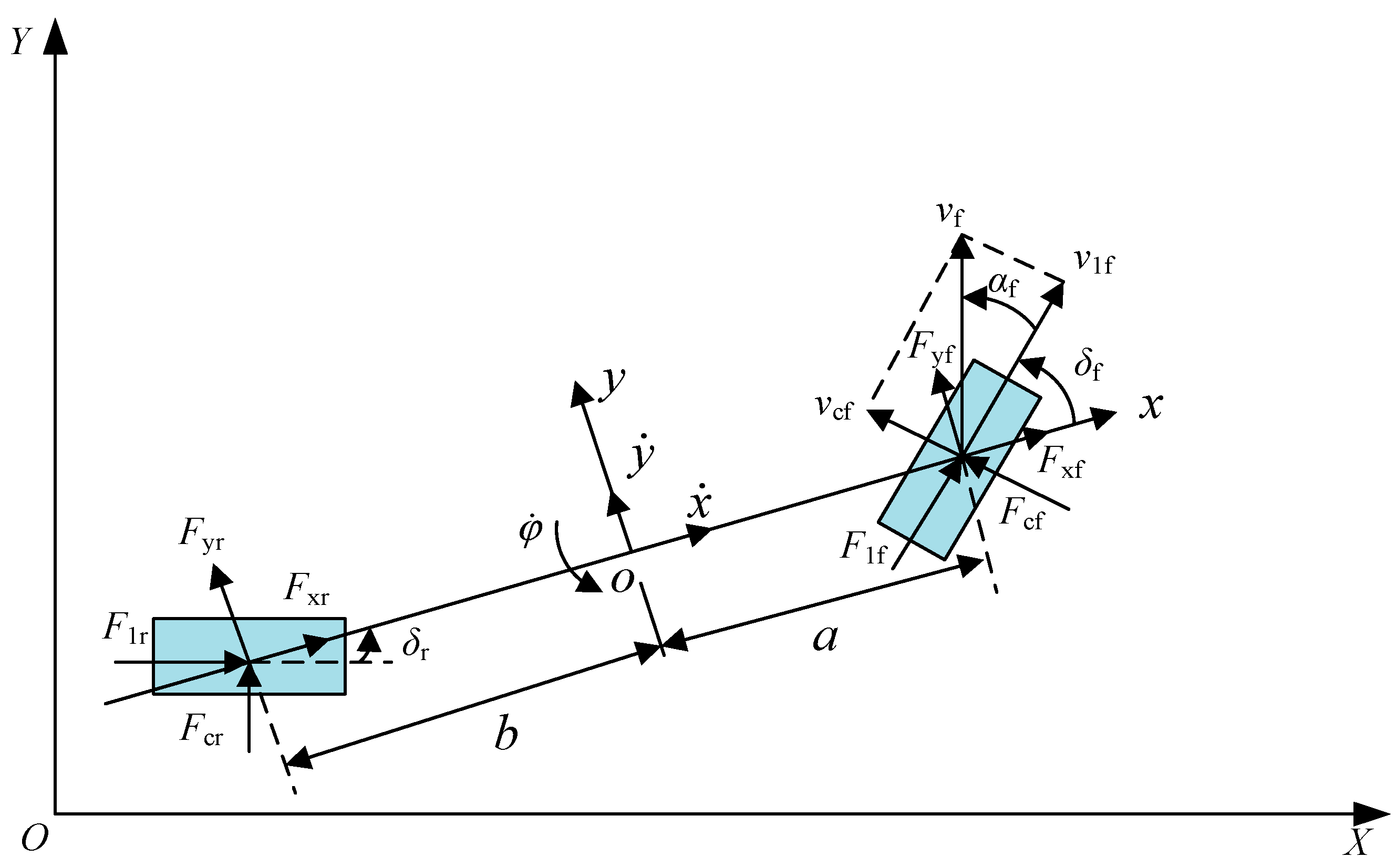
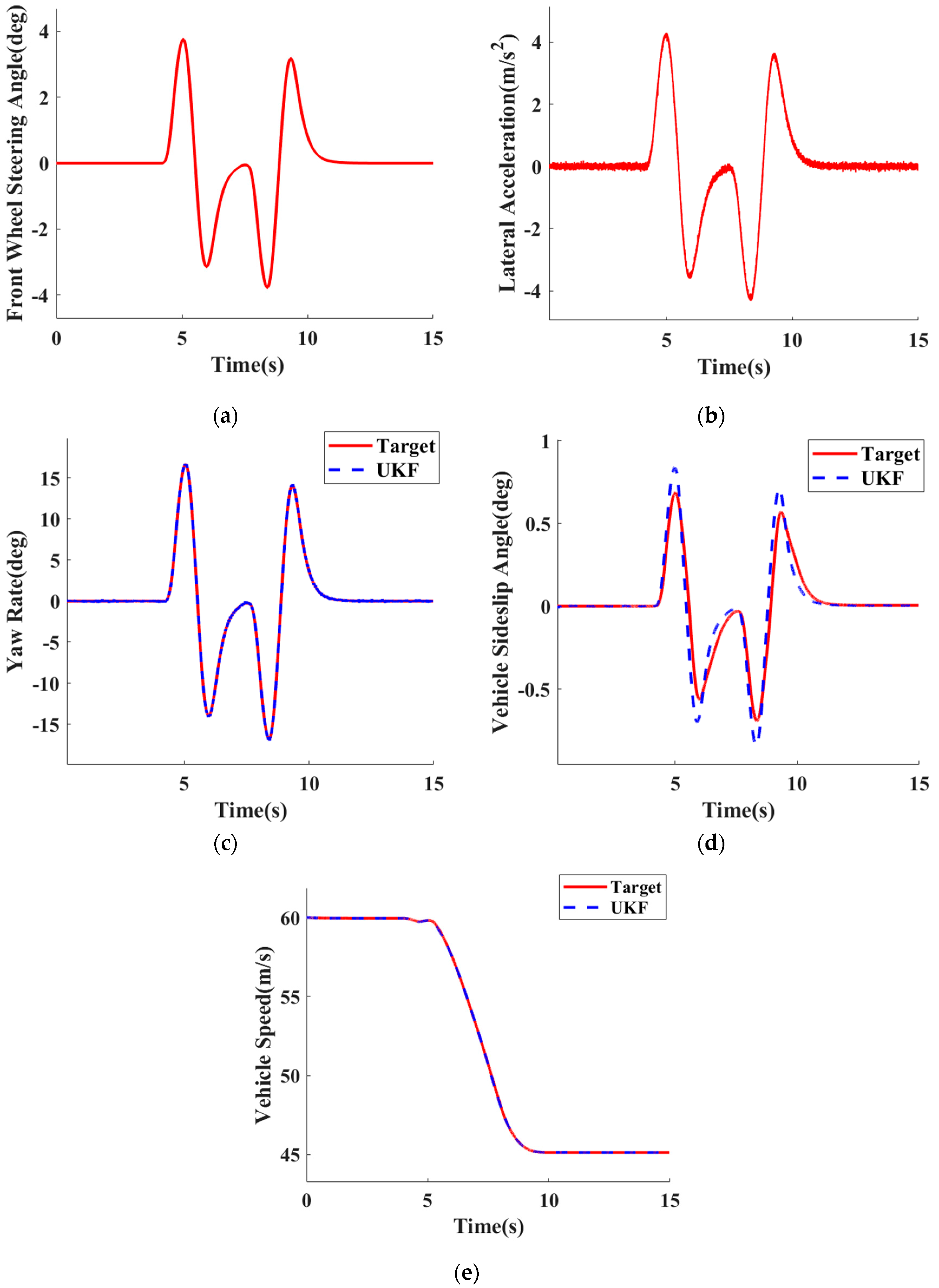


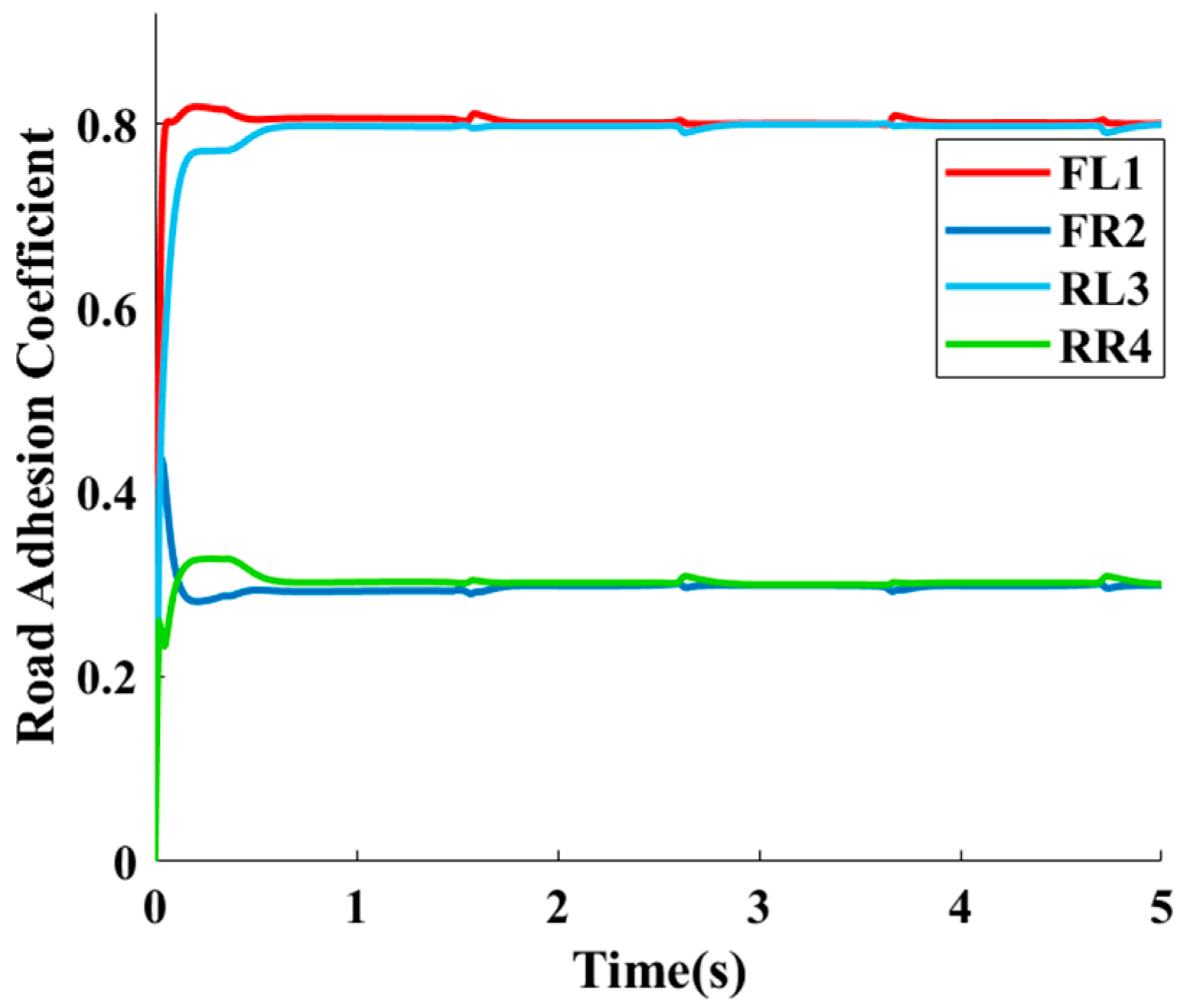
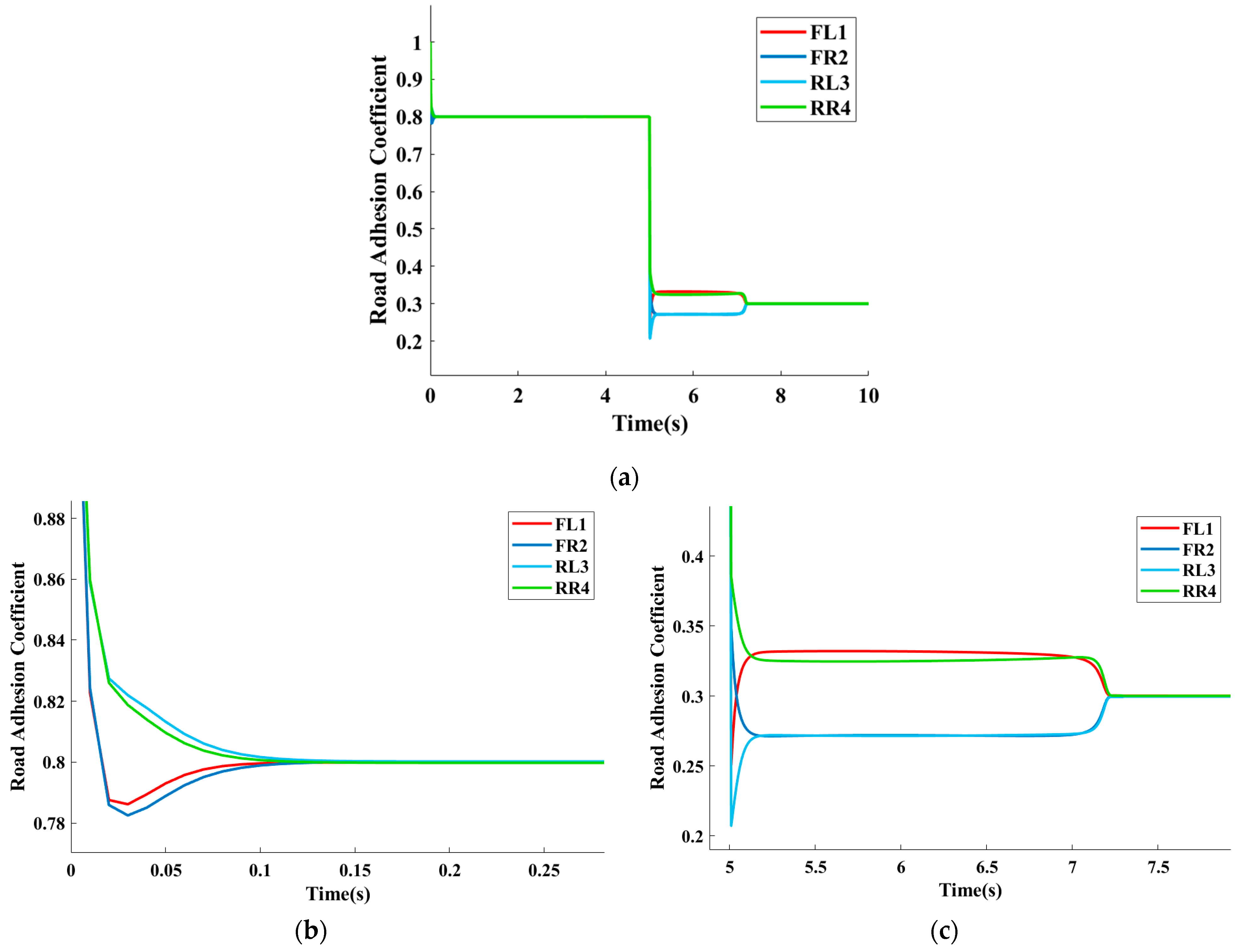
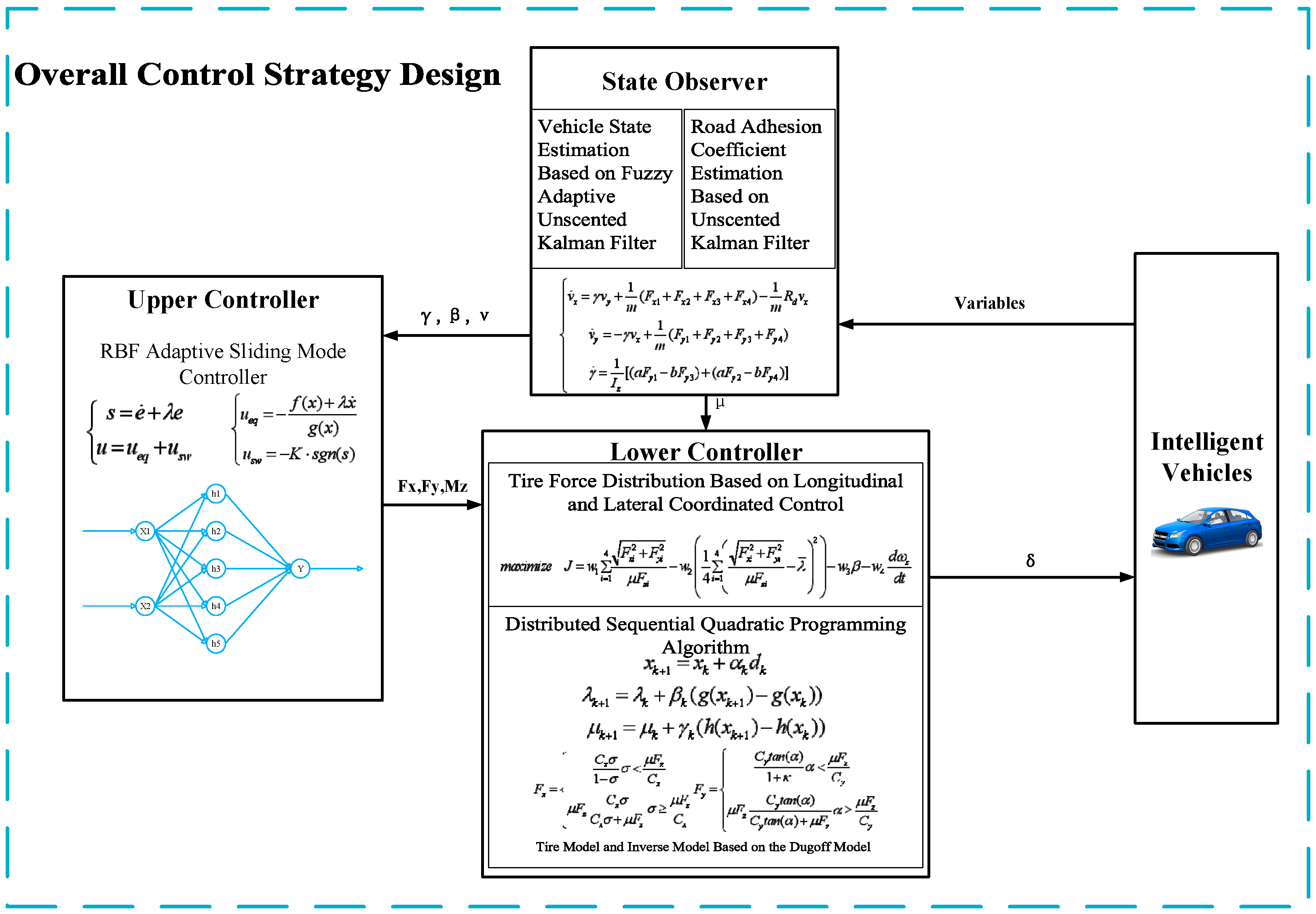
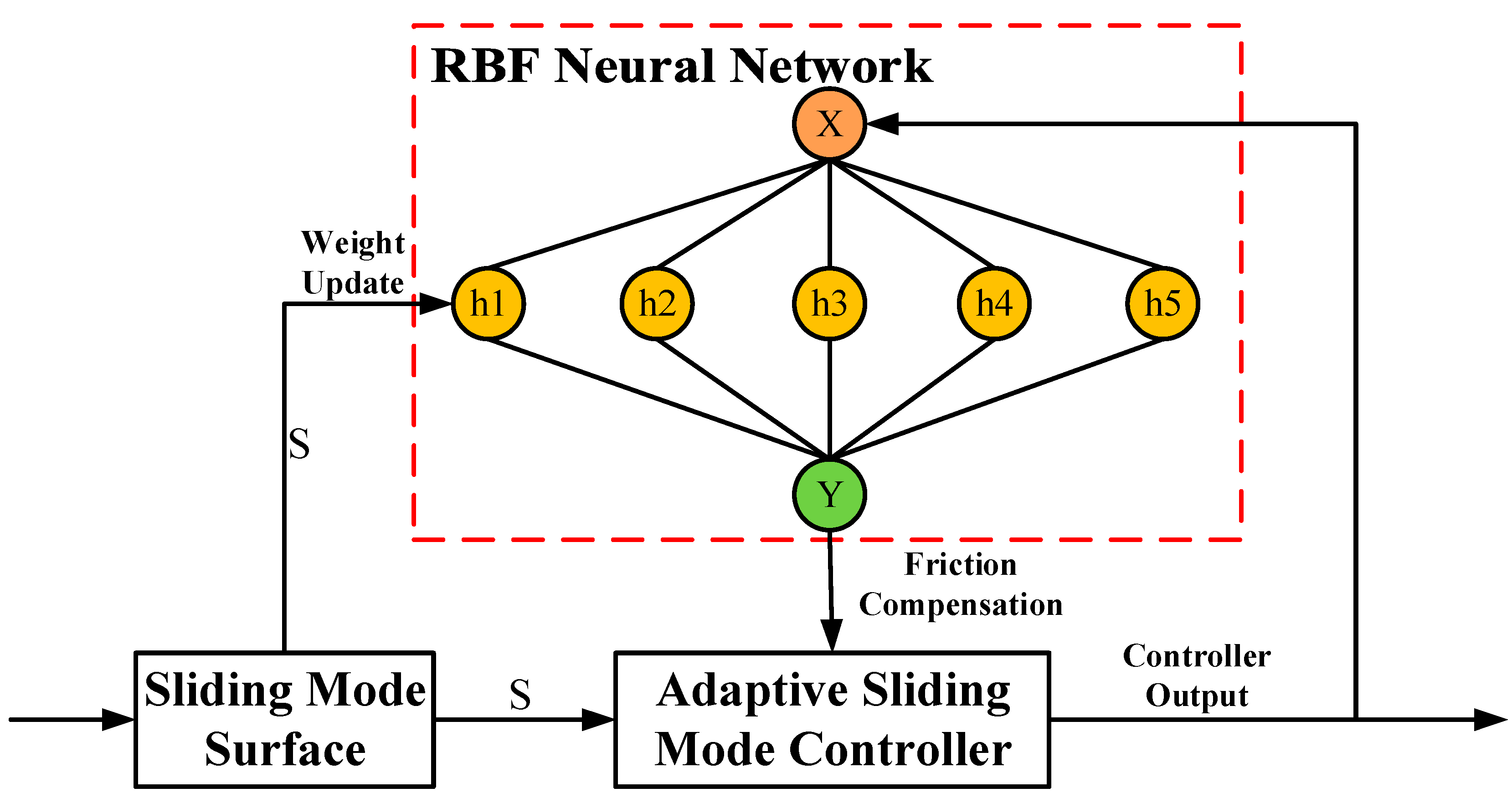
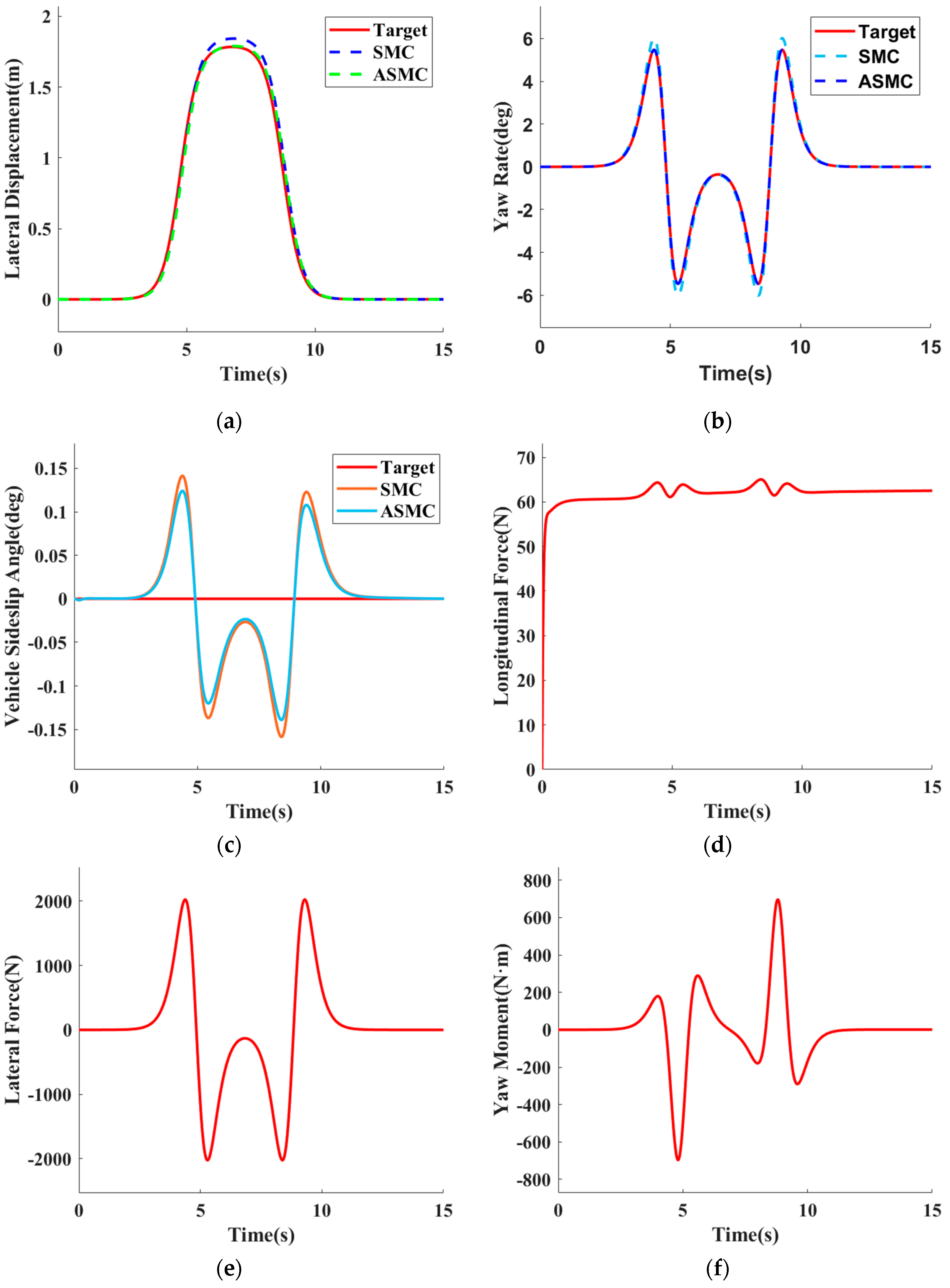
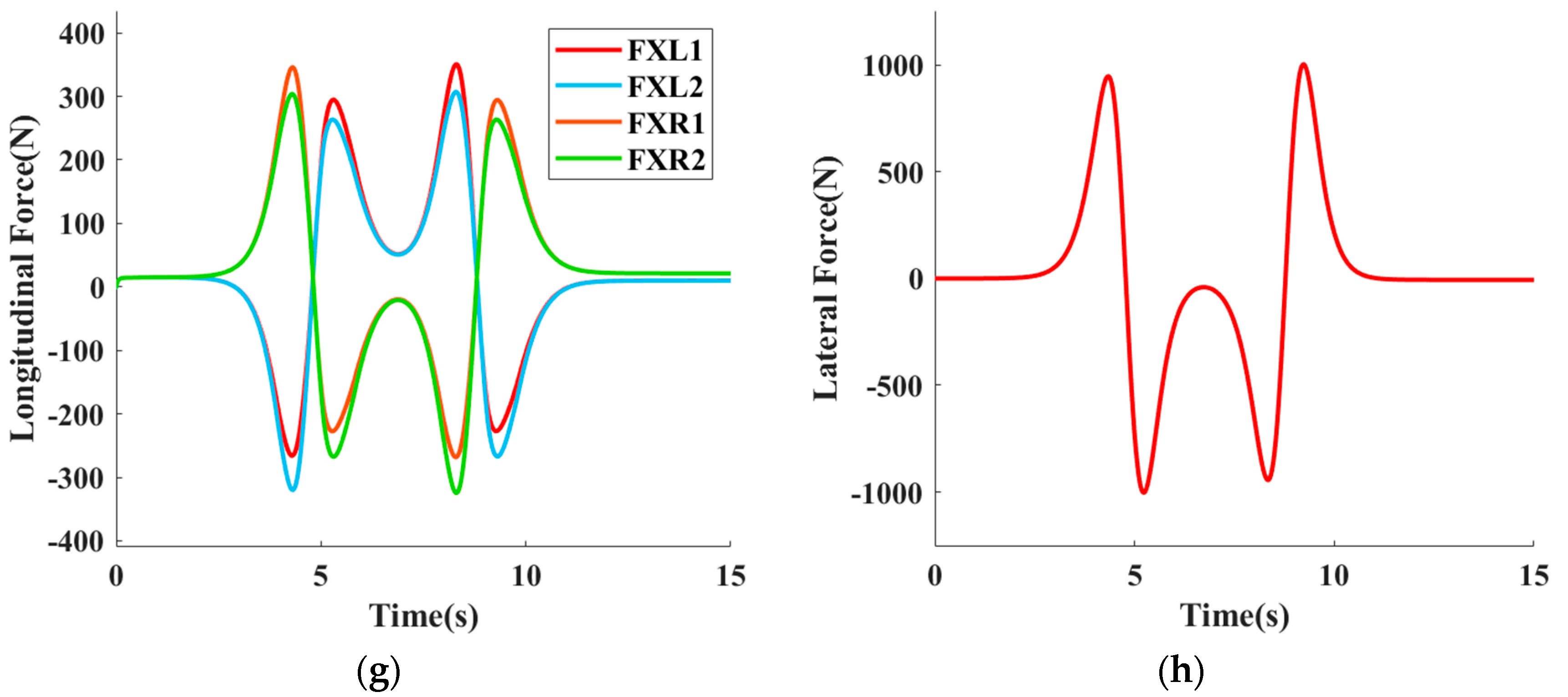
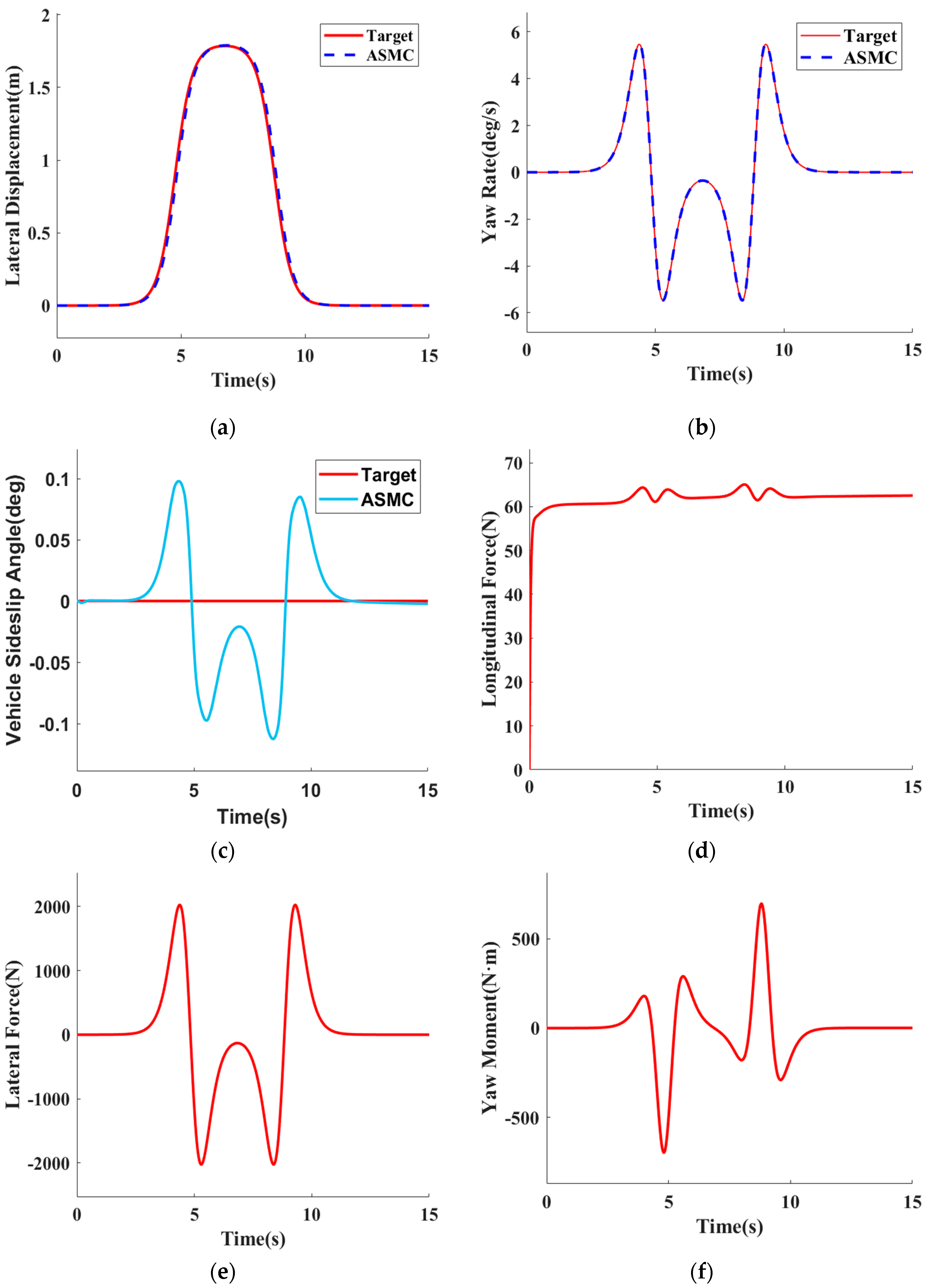
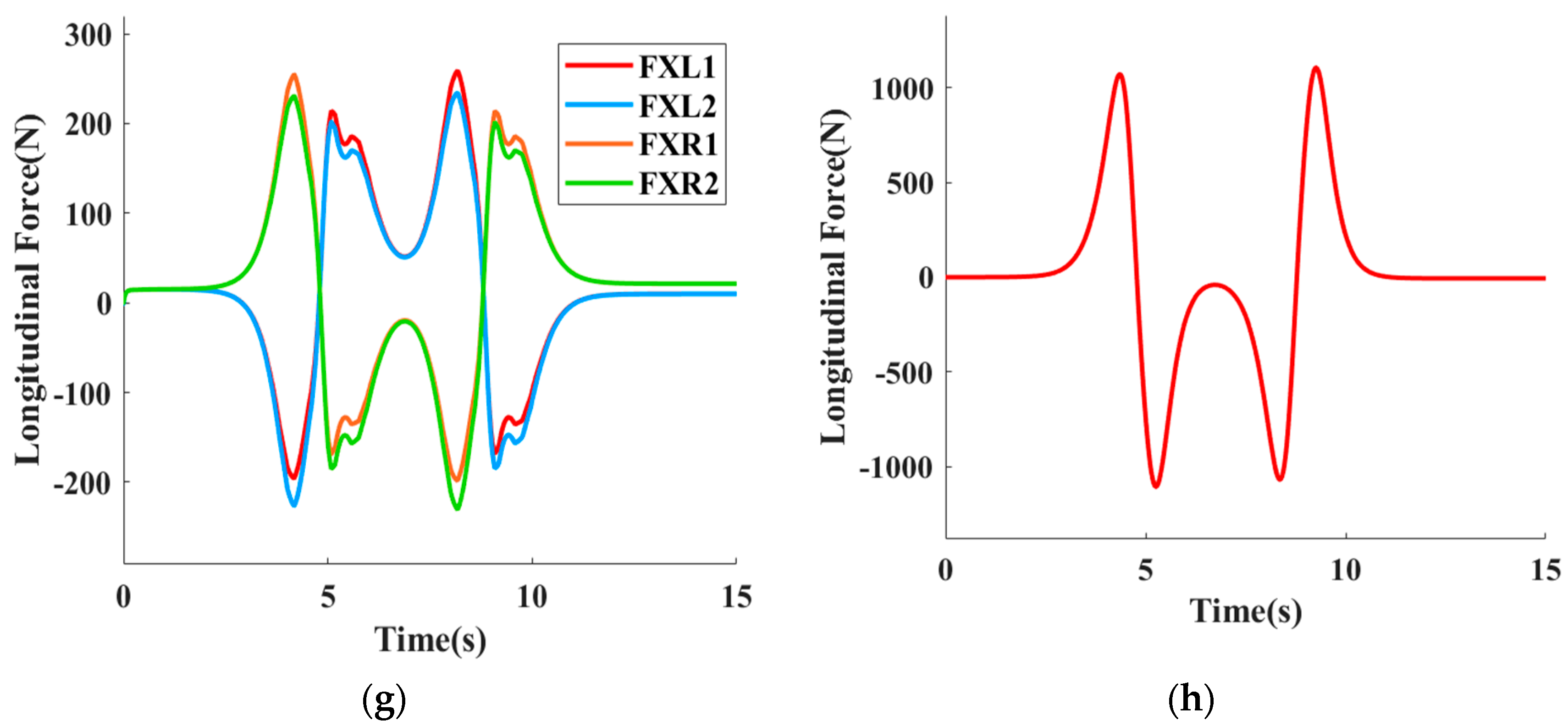
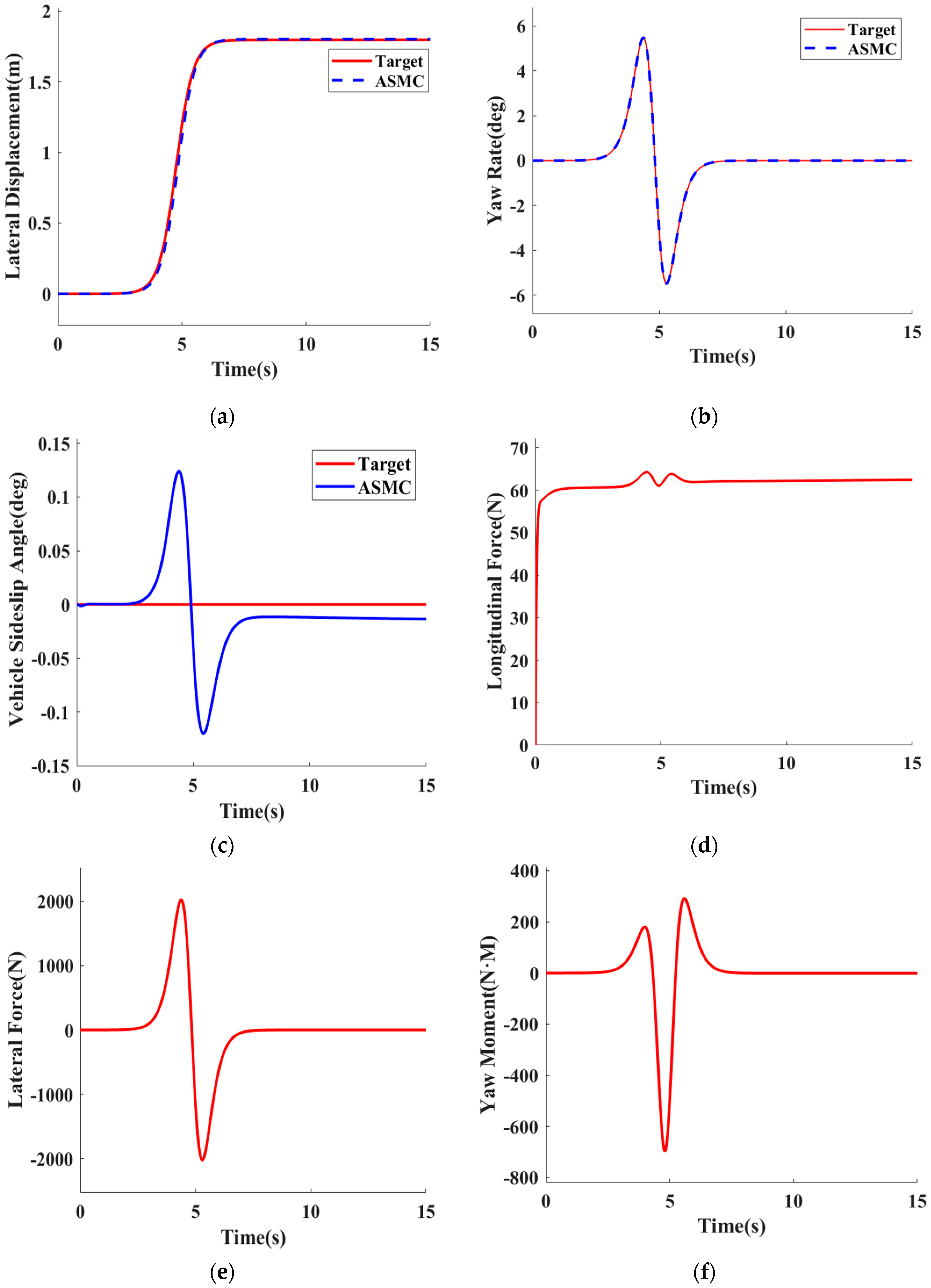
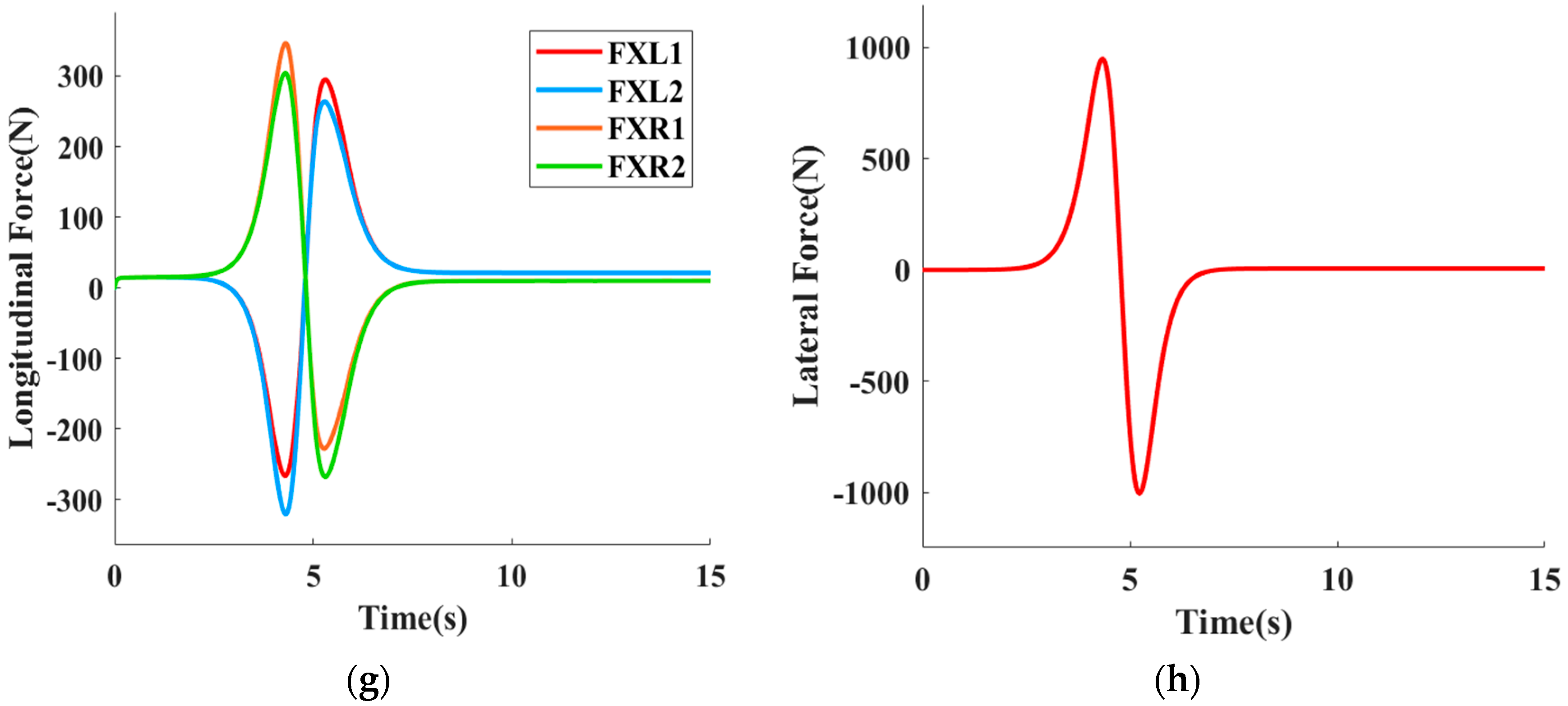
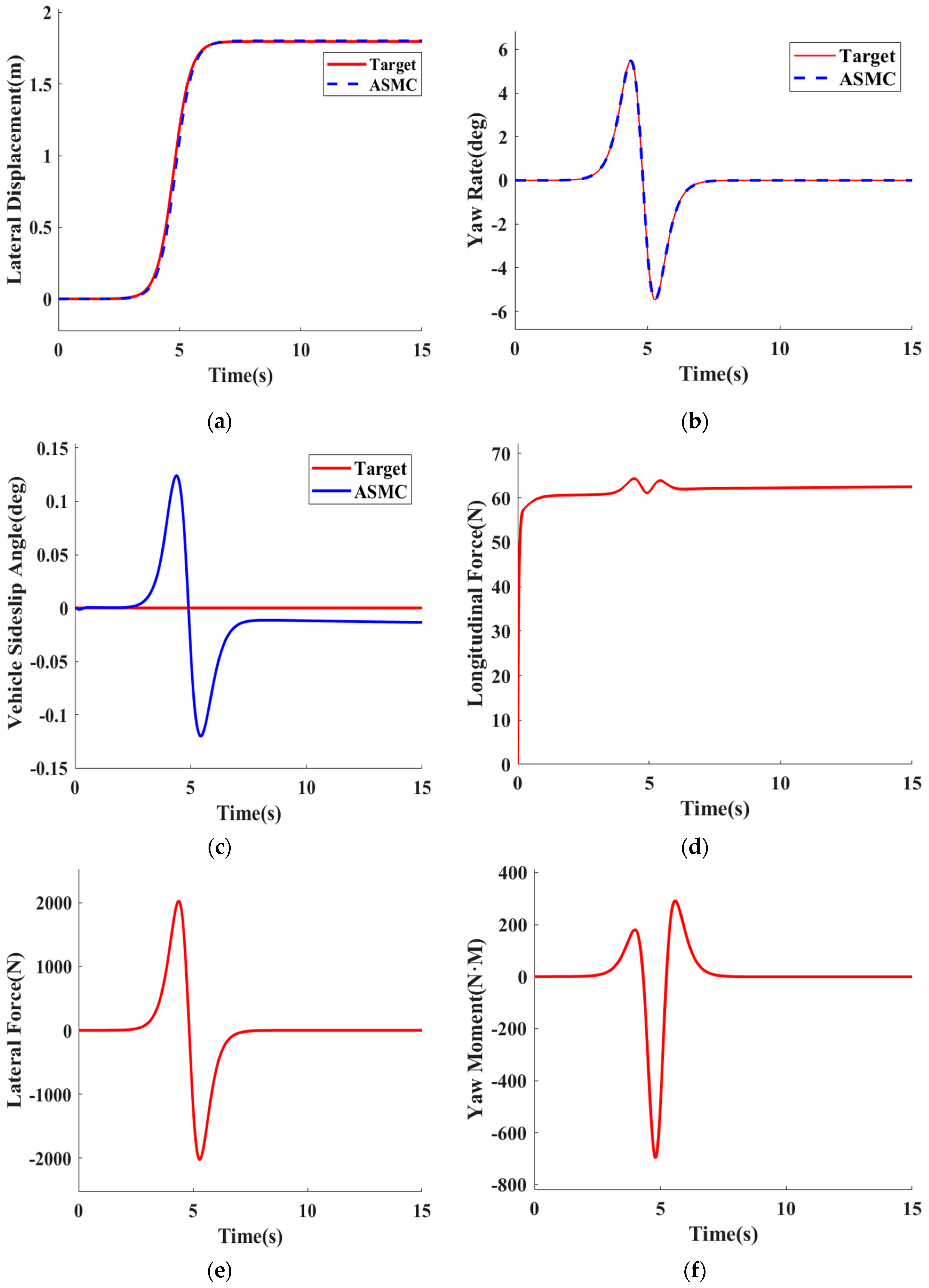
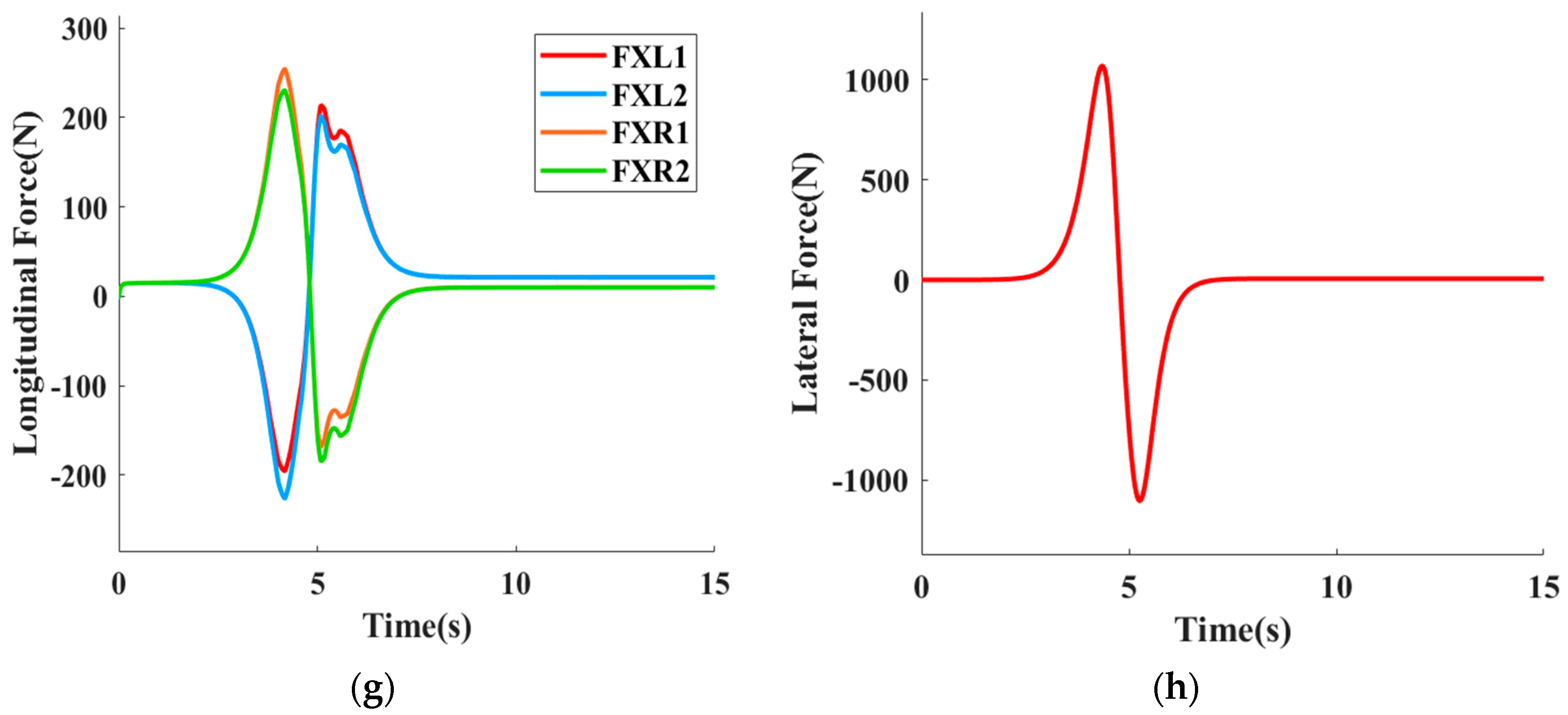
| Control Strategy | Maximum Error (m) | Average Error (m) |
|---|---|---|
| SMC Tracking Error | 0.0912 | 0.0155 |
| ASMC Tracking Error | 0.0677 | 0.0014 |
Disclaimer/Publisher’s Note: The statements, opinions and data contained in all publications are solely those of the individual author(s) and contributor(s) and not of MDPI and/or the editor(s). MDPI and/or the editor(s) disclaim responsibility for any injury to people or property resulting from any ideas, methods, instructions or products referred to in the content. |
© 2024 by the authors. Published by MDPI on behalf of the World Electric Vehicle Association. Licensee MDPI, Basel, Switzerland. This article is an open access article distributed under the terms and conditions of the Creative Commons Attribution (CC BY) license (https://creativecommons.org/licenses/by/4.0/).
Share and Cite
Wang, Y.; Wang, Z.; Shi, D.; Chu, F.; Guo, J.; Wang, J. Optimized Longitudinal and Lateral Control Strategy of Intelligent Vehicles Based on Adaptive Sliding Mode Control. World Electr. Veh. J. 2024, 15, 387. https://doi.org/10.3390/wevj15090387
Wang Y, Wang Z, Shi D, Chu F, Guo J, Wang J. Optimized Longitudinal and Lateral Control Strategy of Intelligent Vehicles Based on Adaptive Sliding Mode Control. World Electric Vehicle Journal. 2024; 15(9):387. https://doi.org/10.3390/wevj15090387
Chicago/Turabian StyleWang, Yun, Zhanpeng Wang, Dapai Shi, Fulin Chu, Junjie Guo, and Jiaheng Wang. 2024. "Optimized Longitudinal and Lateral Control Strategy of Intelligent Vehicles Based on Adaptive Sliding Mode Control" World Electric Vehicle Journal 15, no. 9: 387. https://doi.org/10.3390/wevj15090387
APA StyleWang, Y., Wang, Z., Shi, D., Chu, F., Guo, J., & Wang, J. (2024). Optimized Longitudinal and Lateral Control Strategy of Intelligent Vehicles Based on Adaptive Sliding Mode Control. World Electric Vehicle Journal, 15(9), 387. https://doi.org/10.3390/wevj15090387






